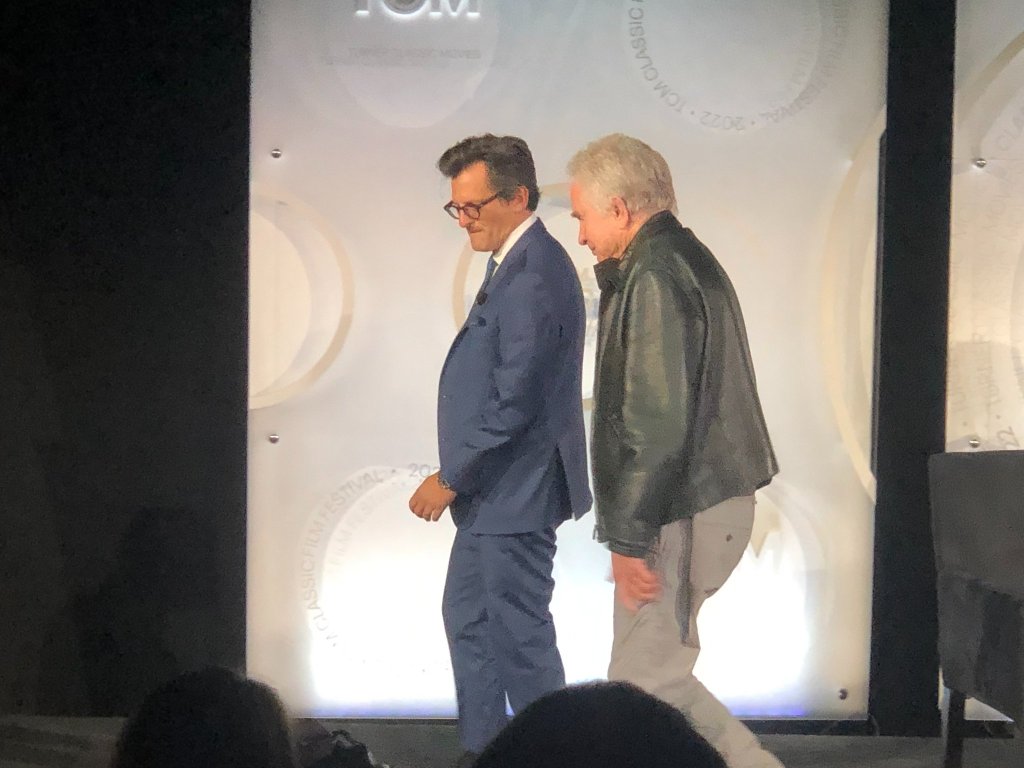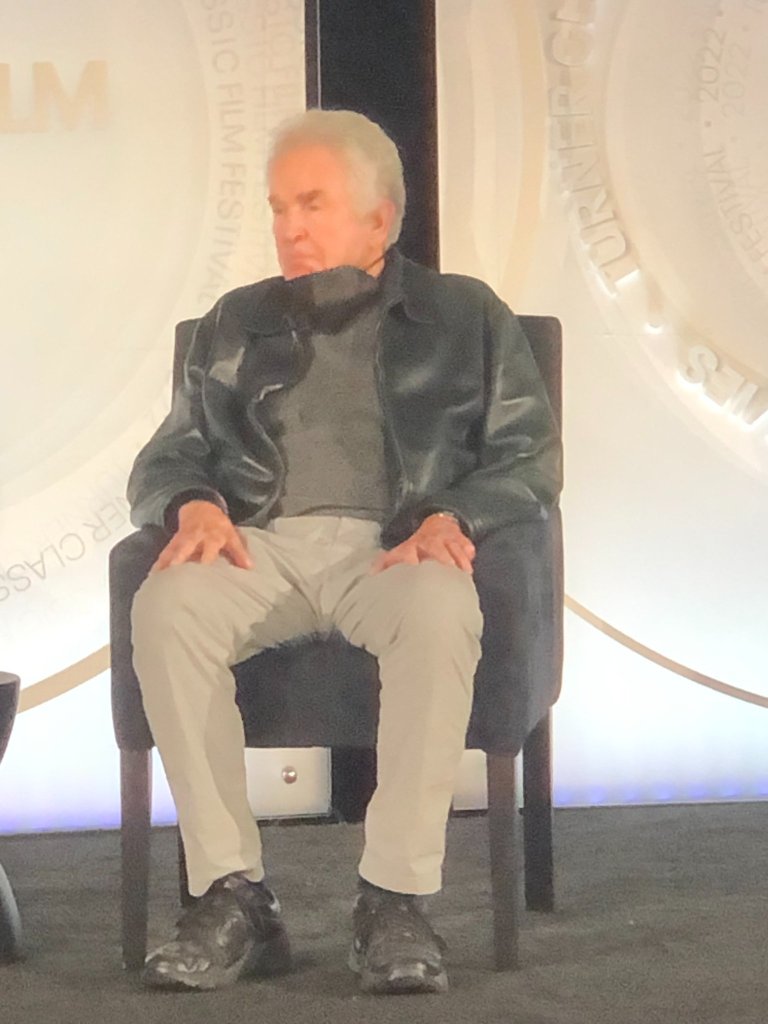
The third day of TCMFF was my busiest day of the fest! There were so many wonderful screenings and exceptional panels to enjoy–and so little time in a day!
Angels with Dirty Faces (1933):
I started off my morning with Angels with Dirty Faces (1933)–a powerful film that I had never seen before. The film contained masterful performances by James Cagney and Pat O’Brien. The film was introduced by actor Keith Carradine.










“You can’t take your eyes off of him,” said Carradine. “He’s such an amazing actor. He could do it all. His dancing–it was fierce. There was a ferocity to the way he moved. He didn’t have any kind of conventional training. I just think he’s one of the most brilliant actors ever. Enjoy this movie. It’s one-of-a-kind and he was one-of-a-kind. Bless you all for being here and supporting this film.”


Three on a Match (1932):
After my initial film, I went on to enjoy the Pre-Code film, Three on a Match (1932). While I had seen this film before, I was never able to view it on the big screen. Despite being a little late to the start of the film after coming from my previous screening, I was still able to get a seat in the back of the theatre. This was a very well-written film that was certainly enjoyable to see with an audience–particularly during the more dramatic moments of the story.

The Flame and the Arrow (1950):
After Three on a Match, I decided to enjoy the opening discussion for The Flame and the Arrow (1950). Unfortunately, I knew I would not be able to see the film because I wanted to prioritize getting a seat at the upcoming Somewhere in Time (1980) screening. (Ah, the dilemmas of such a fine lineup!)
This presentation caught my eye because I really enjoyed the presentation that Visual Effects Artist Craig Barron and Sound Designer Ben Burtt offered in 2019 for Tarzan and His Mate (1934). Joining them was former child actor Gordon Gebert, who appeared in The Flame and the Arrow, among other films. Currently, Gebert is an architecture professor at the City College of New York.
“Actually, right now, I’m getting a text from a student saying, ‘Where are you?'” said Gebert.
Gebert went on to share several stories about Burt Lancaster and Nick Cravat.
“I had done several movies before with other stars and actors–but they clearly were so close and always inventing something,” said Gebert. “They were always together.”




























Somewhere in Time (1980):
Soon enough, it was time for me to get in line to see Somewhere in Time (1980)–another film which I had not been able to see on the big screen before. Moreover, I had visited Mackinac Island, Michigan, where numerous scenes from this film were shot, and was eager to see the island’s beauty magnified. To add to the fun, TCM Host Alicia Malone would be interviewing Actress Jane Seymour prior to the screening.


































“It’s just such a beautiful script,” said Seymour. “It was originally written in San Diego at the Coronado but we couldn’t shoot it there because we needed a place where there were no cars–and there are a lot of cars there. The Grand Hotel in Mackinac Island is also famous for having the longest porch, for what that’s worth. But when you go there, even today, there are no cars on the island. You arrive at a tiny little airport or take a ferry and you get immediately in tune because they put you in a little horse carriage which goes slowly and is quite smelly, but very elegant. And then you arrive at this amazing place–the Grand Hotel. The only cars you see in the shoot came off a ferry and were transported by horses to the spot where they are parked. The other fun part was–because we didn’t have drivers–Chris[topher Reeve] and I were both issued bicycles. His was number one and mine was randomly number seven.”
“I heard that Christopher Reeve also had a secret plane,” said Malone.
“Yes, he did,” said Seymour. “He had his private plane hiding on the airstrip. We did actually break every rule known to man on this show. We would get on our bicycles in the dark–at four or five in the morning–and we’d go and hide the bicycles, get on the plane, and then Chris would try to teach me how to fly it with him. An then we’d go undercover to Toronto or somewhere. And that was fine until someone actually recognized me. So he took his hat off to show, ‘I’m here, too.'”
“I imagine he must have been a very easy person to create chemistry with,” said Malone. “He seems like he was a lovely man.”



Seymour went on to share quite a personal revelation with the audience that added all the more meaning and poignancy my viewing of the film.
“Well, here comes the story that I’m officially telling you now, because–Chris and I–when we made the film, we literally fell madly in love,” said Seymour. “When you see this film, you will see the real thing–but we didn’t let anyone know. We were as subtle as we could be about it. We were madly in love, life was wonderful, we were both single, and we loved this movie. It was an amazing experience and we loved everything about it. Everyone was great friends. It was wonderful. Anyway, I came into work, and it was one of the biggest scenes in which I had to ask him questions about his life. Just before that, Chris had an earlier call. […] I came out about a half hour later and they told me, ‘Chris needs to talk to you about something.’ It was that he was about to have a baby and that his ex-girlfriend hadn’t told him and that she had just announced it to the world. So, I then had to put my big girl pants on and–when I watch that scene, I can literally see the tears coming halfway up my eyeballs. I just kept saying, ‘You can’t cry. You can’t cry. You can’t cry. Elise is really happy right now.’ So, anyway, the good part of the story is that Chris went on to have these two beautiful children and we met one another on many occasions. We remained really, really close friends, literally till the day he died, and I have to believe that I will one day see him somewhere in time.”
Heaven Can Wait (1978):
After quite an emotional screening, I went on to another highly-anticipated event the screening of Heaven Can Wait (1978), preceded by an interview conducted by TCM Primetime Host Ben Mankiewicz and Actor Warren Beatty. This film made Beatty the first person to earn Oscar nominations for producing, directing, writing, and starring in a single film.
After snaking through a line at the TCL Chinese Theatre forecourt, I was delighted to enjoy this breezy, fun interview with Beatty.









“I was a producer longer than a director and for this one,” said Beatty. “I felt I couldn’t avoid it. Originally, I wanted to do it with Muhammad Ali. I was very friendly with him. He was a good actor. I loved him. He wanted to do it, but he couldn’t. So, I changed the character to football because I played football in college. I was not bad.”




































Though Beatty toys with the idea of writing a memoir, he also shared, “I don’t read books about me. Maybe I read ten pages. Then I say, ‘Oh, please.’ To me, it’s history and history is over.”
Mankiewicz and Beatty are friends in real life, often frequenting The Apple Pan in Los Angeles, California.
Closing the interview, Mankiewicz told Beatty, “You are one of the of the defining actors, producers and directors of your and every generation that has followed. You make all of our lives markedly better.”
Portrait of Jennie (1948):
Shockingly, I still had some energy left after Heaven Can Wait and went on to view yet another new-to-me film. This time, I was immersed in the esoteric beauty of Portrait of Jennie (1948), introduced by Writer and Director Allison Anders.




The film was gorgeously shot and written, with the enigmatic Jennie character sweeping in and out of the story. Jennie was played expertly by the great Jennifer Jones, romantically anchoring the story. Additionally, it is quite clear that this is David O. Selznick’s homage to his own muse, none other than Jones herself.




After such a busy day of screenings, I could hardly believe that the final day of the festival was fast-approaching.






